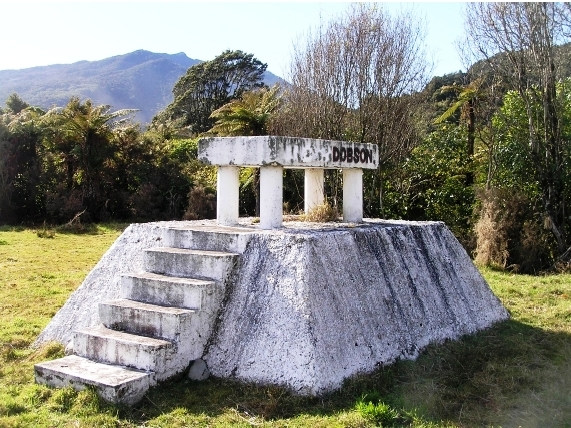In spending the weekend just gone in Amsterdam, I was of course following in the footsteps of the twentieth century’s most illustrious out of print pamphleteer. But whereas I went to the Dutch capital in the cause of art, Dobson’s visit was occasioned by a challenge. Let me tell you all about it.
It so happened that one wet and windy morning in the 1950s the pamphleteer was on his usual trudge along the towpath of the old canal, when a man sprang out at him from behind a splurge of cuckoopint. The man was rotund and diminutive and dressed all in green, with a little green pointy hat. He looked like a figure from a fairy tale, and though his name was not Rumpelstiltskin, it was similar, with the same number of syllables but a slightly different combination of vowels and consonants.
Such was the suddenness of the strange little man’s springing that Dobson was disconcerted, and would have toppled over, sploshing into the canal, had he not had the presence of mind to deploy a Goon Fang technique he had recently mastered. In this exercise of the ancient mystic art, one is able to fix one’s feet to the ground, as if magnetically, for just long enough to avoid topplement. Dobson swayed slightly.
“Drat and heaven’s hounds a-gubbins!” screeched the little fellow dressed in green, “You were meant to topple over into the canal with a splosh that would cause me much mirth!”
“Then you are confounded!”, shouted Dobson.
“What I do,” said the little man, “Is to present those who confound me with a challenge. I challenge you to go to Amsterdam, in the Netherlands, a city with a magnificent network of seventeenth century canals, and I further challenge you to walk alongside each and every canal in Amsterdam, from end to end, on both banks, trudging along back and forth, and to complete the task without once toppling into one or other of the canals. Do you accept my challenge?”
“I do,” said Dobson immediately, without thinking. But he was not being unduly impetuous. He realised that a trip to Amsterdam could provide the opportunity for important research,
“It so happens,” he explained, “That I am currently at work on a pamphlet devoted to the study of mariners with an exclusively fish-based diet. I have heard that in the port of Amsterdam, where the sailors all meet, there’s a sailor who eats only fish heads and tails, and he’ll show you his teeth that have rotted too soon, that can haul up the sails, that can swallow the moon. And he yells to the cook, with his arms open wide ‘Hey, bring me more fish, throw it down by my side’ and he wants so to belch, but he’s too full to try, so he stands up and laughs and he zips up his fly, in the port of Amsterdam, in the port of Amsterdam. I would like to meet that sailor, and interrogate him on his diet.”
“I have often wondered,” said the little man dressed all in green, “If the port of Amsterdam is the port to which Emily Dickinson was referring in that magnificently sensual poem ‘Wild Nights!’, where she writes Futile – the winds – To a Heart in port – Done with the Compass – Done with the Chart!”
“Perhaps that is something else I can research while I am there,” said Dobson.
The little man chuckled horribly.
“You will be too busy wringing out your clothing, sopping wet from repeated topplings into one canal after another,” he said.
“We shall see,” said the pamphleteer.
“Meet me again by this splurge of cuckoopint in a week’s time,” said the little man, “While you are in Amsterdam I am going to sit in my Reichian orgone accumulator and recite ‘Wild Nights!’ over and over again. So impassioned is the poem that I hardly dare think to what explosive pitch the orgone energy levels will rise!”
It was Dobson’s turn to laugh.
“Reichian methods would not stop me from toppling into the many canals of the port of Amsterdam,” he said, “But I have mastered the magnetic bootsole technique of Goon Fang, and will practise it with great assiduousness!”
A week later, on a wet and windy morning, Dobson returned to the splurge of cuckoopint on the towpath of the old canal. But of the strange little man dressed all in green there was no sign. It was not until many weeks had passed that the pamphleteer learned, from an article in The Emily Dickinson Orgone Energy Digest (Vol XXI, No. 9) that a lethal concentration of what Wilhelm Reich called DOR, or “deadly orgone”, had caused a massive explosion in the vicinity of the canal, at precisely the time Dobson was in Amsterdam.
Although he never completed his work on mariners with exclusive fish diets, Dobson did write a pamphlet entitled On Not Toppling Into Any Of The Many Canals Of Amsterdam (out of print).
In spite of my mastery of Goon Fang, he wrote, I took the extra precaution of smearing the soles of my Ruritanian Bellringer’s boots with an extremely viscous substance composed of glue and egg yolk and sand and gum and gunk and goo and powerful magnets, retailed under the trade name Gosh! It’s Very Sticky! ®. This proved a boon, for though no funny little men dressed all in green with green pointy hats sprang out at me as I trudged alongside each and every canal in Amsterdam, I was not prepared for the dazzling number of Dutch cyclists whizzing at high speed along those very same paths. I would certainly have toppled into canal after canal after canal had my boots not been riveted to the ground.
I count myself fortunate that I had read a rare copy of this pamphlet before my own weekend in Amsterdam. Had I not, I feel sure I too, surprised by cyclists, would have toppled into many canals, and returned home sopping wet. It just goes to show how valuable it can be to gain a familiarity with Dobson’s more obscure works.
I did not, incidentally, seek out the sailor who eats only fish heads and tails. Perhaps I should have.





